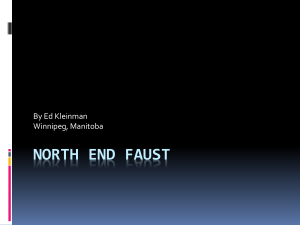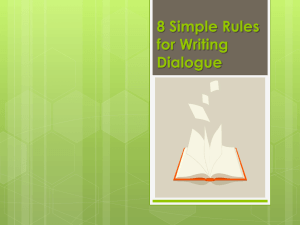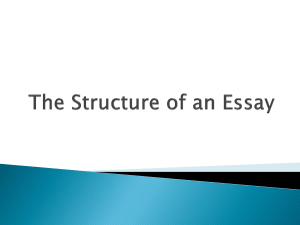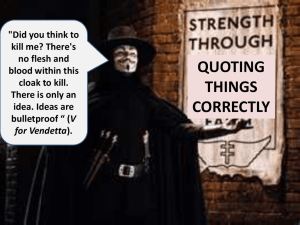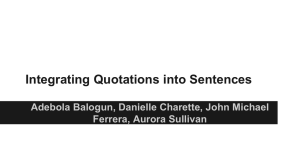Paragraph Writing and MLA Lesson
advertisement
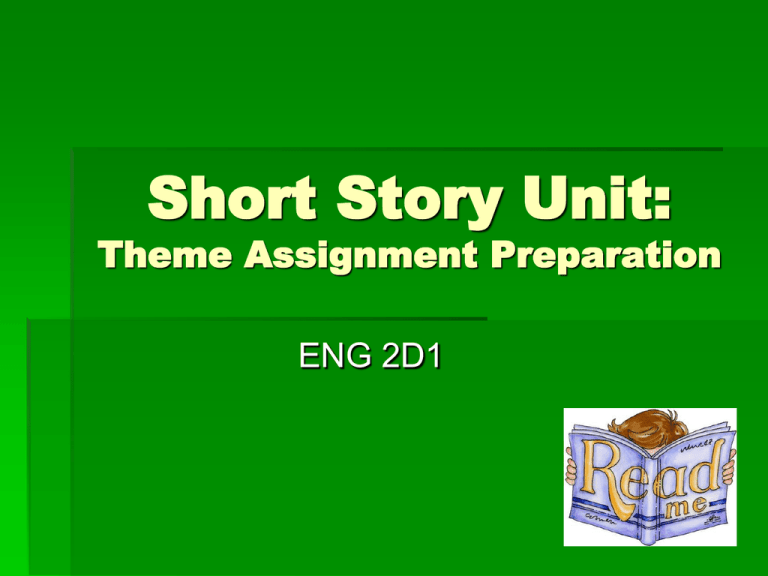
Short Story Unit: Theme Assignment Preparation ENG 2D1 Proper Paragraph Structure 1. Topic Sentence- Introduces the reader to the main idea of your paragraph. Note- indent the first sentence of your paragraph. 2. Supporting SentencesOffers the reader details, examples and proof to support the main idea of the paragraph. 3. Concluding SentenceWraps up the paragraph and restates the main idea from the topic sentence. Transitional Words and Phrases Transitions are words or phrases that connect ideas. Transitions help the reader clearly understand relationships in your writing such as time, space, emphasis, example, contrast, comparison, effect and addition. In a proper paragraph, transitions are incorporated to create fluency in your writing and to connect your ideas/sentences. For example: Firstly, Secondly, Lastly, Finally For example, For instance, Thus, As a result, Consequently In addition to, Similarly In contrast, Rather, Yet, But Transitional Words and Phrases MLA Format General Guidelines: Double space Plain font (Ariel or Times New Roman) Plain white 8 ½ x 11 paper Margins = 1 inch on all sides Indent the first line of every paragraph using the “tab” key Pages are numbered in the top, right-hand corner, ½ “ from the top, and right justified. Note- Put your last name followed by one space and the number. Do not use commas. MLA Format General Guidelines: Do not create a title page. In the upper left hand corner of your page list: 1. 2. 3. 4. Name (first and last) Teacher’s name (Ms. Efpatridis) Course code (ENG 2D1) Date (day of submission) Note- Be sure to double space between each piece of information. Double space again. Do not underline or italicize the title. Double space between the title and the first sentence. MLA Format Notes on Style: Be consistent with tense. Literary paragraphs/essays are normally written in the present tense. Do not use artificial phrasing such as “This quotation proves . . . “ or “This paragraph will discuss . . .” Use formal, standard English. Avoid slang or colloquialisms. Do not use contractions. (e.g. use “do not” instead of “don’t”) Do not use first person (I, me, us, we) unless your teacher gives you permission. Do not address the reader directly as “you”. Use italics for the titles of all books and movies. Use quotation marks for all sub titles. Point-Proof-Analysis The supporting sentences of your paragraph should follow the pointproof-analysis model. Following the topic sentence of your paragraph: 1. Point- raise a point in support of the main idea. 2. Proof- provide proof in the form of direct or indirect references to the text. 3. Analysis- analyze the point raised and proof provided, relating the information back to the main idea. For example: The Story of an Hour Point: Mrs. Mallard is clearly in an unhappy relationship. Proof: She admits that there has been a “powerful will bending hers” (Chopin 38) which attests to the dominating personality of her husband. Analysis: Throughout her life, Mrs. Mallard has succumb to the will of her husband and lost any sense of self. Note- Write in the present tense, not the past tense. Also, place an emphasis on the analysis component. This is where you showcase your learning and critical thinking. Inserting Quotations Use quotation marks to begin and end a direct quotation. In a direct quotation, the words of the speaker are quoted exactly, and the first word of the quotation is capitalized. Direct: Mrs. Mallard states “Free! Body and soul free” (Chopin 38). Both parts of a divided quotation are enclosed in quotation marks. The first word of the second part of the quotation is not capitalized unless it begins a new sentence. Divided: “There would be no one to live for during those coming years,” says Mrs. Mallard, “she would live for herself” (Chopin 38). Inserting Quotations Quotation marks are never used with an indirect quotation, which reports the meaning of the speaker but not in direct words. Indirect: Mrs. Mallard talks about freedom, in particular, she exclaims she is free in both her mind and body (Chopin 38). MLA Format Short quotations of 1 to 4 lines are put into quotation marks and included, double spaced, in the body of the assignment. They are introduced by a comma (,) unless they are a continuation of a body paragraph sentence; the appropriate punctuation, or none at all, is then used. Quotations are followed by the author’s last name and page reference in parentheses, with no punctuation included, except a period after the closing bracket. For example: (Chopin 38). MLA Format Always lead up to your quotation by giving the speaker and the situation. Do not assume that the reader knows the exact part of the story that you are quoting. Always follow up your quotation by commenting on, explaining, applying, interpreting, or drawing a conclusion from your quotation. Do not leave the reader to do the work! Never move on to a new point or paragraph immediately after the quotation. Questions??? Do you have any questions or concerns?

